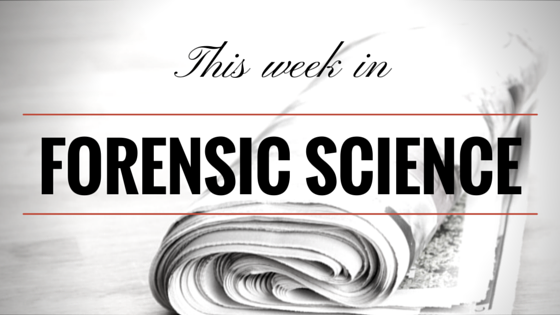No one has hours to scour the papers to keep up with the latest news, so we’ve curated the top news stories in the field of Forensic Science for this week. Here’s what you need to know to get out the door!
A New Approach to Amplifying DNA (Phys Org – 3/31/2017)
Analyzing DNA is useful for a number of vital applications. This includes diagnosis and monitoring of diseases, identification of criminals, and studying the function of a targeted segment of DNA. However, methods used for analyses often require more DNA than may be available in a typical sample. ‘Therefore, amplification is necessary, but not always straightforward.
Program to Identify Dead and Missing Across US Put on Hold (Reveal – 4/1/2017)
The largest lab that tests DNA for missing people and unidentified dead no longer will accept DNA samples from law enforcement agencies and crime laboratories across the country because of a nearly $1 million cut to its funding.
Archaeology: DNA Research Helps Understand how the Americas Were First Populated (The Columbus Dispatch – 4/2/2017)
Biological anthropologists Connie Mulligan, of the University of Florida, and Emoke Szathmary, of the University of Manitoba, consider how genetics informs our current understanding of the population history of the Americas in the latest issue of the American Journal of Physical Anthropology.
Police and Doctors Could Team Up to Treat, Prevent Violence (Forensic Magazine – 4/3/2017)
- Health professionals could provide more information to law enforcement, which would improve crime investigation and prevention, write two experts in The Journal of the American Medical Association recently.
Report Identifies 25 Distinct Types of Human Trafficking (Forensic Magazine – 4/3/2017)
Polaris, a global nonprofit organization dedicated to ending modern slavery and human trafficking, released its comprehensive report The Typology of Modern Slavery on Wednesday.
Hair Isotope Analysis Could Reveal Sex, BMI, Diet, Exercise (Forensic Magazine – 4/4/2017)
Isotope analysis of the hair shaft provides a series of identifiers, including age, sex, BMI, diet and even exercise habits, the researchers contend.
Ancient DNA and the Rise of ‘Celebrity Science’ (Nature – 4/4/2017)
Video: One City Looks to Bring in More Forensic Lab Technicians (WCBI – 4/4/2017)
A consultant hired to review the Columbus Police Department gave an update on his evaluation during the Columbus Mayor and City Council meeting on Tuesday.
AFMES, Helping Bring Loved Ones Home One FRS at a Time (DVIDS – 4/4/2017)
Processing of Family Reference Samples have previously been performed by the sections of the Armed Forces Medical Examiner System Department of Defense DNA Registry but has been moved to a section specifically devoted to that mission.
New Forensics Lab Set to Bring DNA Analysis to International Levels (The Irish Times – 4/5/2017)
- The body in charge of analysing crime scene forensics has said a new €60 million laboratory will bring the processing of DNA in line with international standards.
Tenacity, Technology Lead to Possible ID of 1970 Murder Victim (Times Herald-Record – 4/5/2017)
A hunter found her body in October 1970, in the woods off Route 94 in Chester.
She’d been there a few months. Police say her hands were tied behind her, and the killer shot her in the chest, shoulder and spine. She fell backwards. Her body shielded her fingers from the ravages of weather and animals.
Crime Commission to Study Expanding DNA Collection (CBS 19 – 4/5/2017)
The Virginia Crime Commission says it will formally study the impact of enhanced DNA collection for additional crimes.
According to a release, the study will analyze data available from other states, like Wisconsin and New York that already have expanded collection policies for misdemeanor offenses.
Interview with Forensic Geophysicist Dr. Jamie Pringle (Locard’s Lab – 4/6/2017)
WOULD YOU LIKE TO SEE MORE ARTICLES LIKE THIS? SUBSCRIBE TO THE ISHI BLOG BELOW!
SUBSCRIBE NOW!


